ARTICLE AD BOX

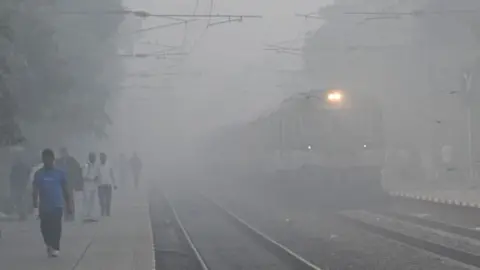 Getty Images
Getty Images
Pollution has disrupted transport services in Delhi
Winter has come to Delhi and with it, a familiar sense of gloom. The sky here is grey and there is a thick, visible blanket of smog.
If you stay outdoors for more than a few minutes, you can almost taste ash. You will feel breathless within minutes if you try to run or even walk at a brisk pace in the smog.
Newspapers are back to using words like toxic, deadly and poisonous in their main headlines.
Most schools have been shut and people have been advised to stay indoors - though those whose livelihoods depend on working outdoors can’t afford to do so.
Delhi’s air quality score was somewhere between 1,200 and 1,500 on Monday and Tuesday, according to different monitoring agencies. The acceptable limit is less than 100.
These scores measure the levels of particulate matter - called PM 2.5 and PM10 - in the air. These tiny particles can enter the lungs and cause a host of diseases.
On social media, people have been expressing shock, disappointment and anguish that it’s all happening again.
Along with the gloom, there is a strong sense of déjà vu - like we have seen this all many times before in the past 15 years.

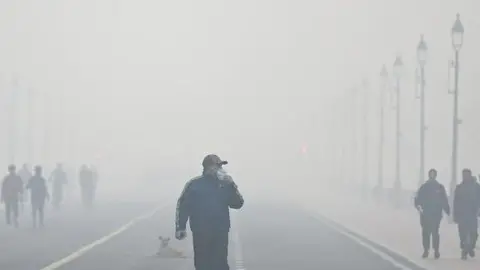 Getty Images
Getty Images
Many people still brave the poisonous air to go on walks
I recorded this video of my drive to office in 2017, when smog had reduced visibility to less than 2m.
On Tuesday, my drive to the office seemed even worse.
And we have covered every twist and turn of this story in the past two decades.
We have reported how pollution is making people sick and reducing their life expectancy here, here and here.
We have reported on India’s Supreme Court ordering the government to take urgent steps to curb pollution every year. The court has done the same this year.
We have reported on how pollution affects children the most and how their freedom is taken away here, here and here.
We have written about how politicians blame each other for the problem every year here, here and here.
We have discussed the root cause of the problem here, here and here.
We have also talked about solutions - both the ones that marginally worked and the ones that failed miserably - here, here and here.
We have reported on how pollution affects the poorest the most and how many don’t have a choice but to go out and work in the smog here, here and here.

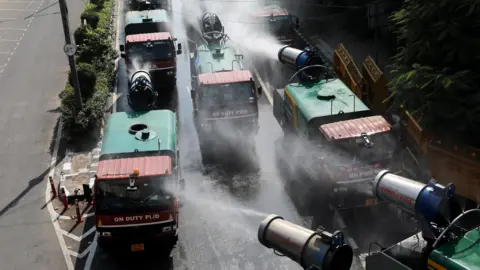 EPA
EPA
Smog guns that spray water are among anti-pollution measures used in Delhi
Covering this story feels like watching (and being in) the same dystopian film every year - following the same characters, plot and script. The outcome is always the same - nothing changes.
The parks are empty again - people, particularly children and the elderly, have been told to stay indoors.
Those who must work - daily-wage labourers, rickshaw pullers, delivery riders - are coughing but still going out.
Hospitals are seeing an increasing number of people coming in with respiratory problems.
And amid all this, we are back to the same question again - why does nothing change?
The simple answer is that solving Delhi's air problem requires monumental efforts and coordination.
The sources of the problem are many. One of them is the practice of farmers burning crop remains to clear their fields quickly to sow seeds for the next yield.
This mostly happens in the neighbouring states of Punjab, Haryana and Uttar Pradesh. The smoke from the farm fires engulfs Delhi every winter and hangs low in the atmosphere as wind speeds reduce during winter months.
But farmers can’t be entirely blamed for this because this is the cheapest way of clearing fields.
Different governments have talked about providing machines and financial incentives to stop crop burning, but very little has happened on the ground.

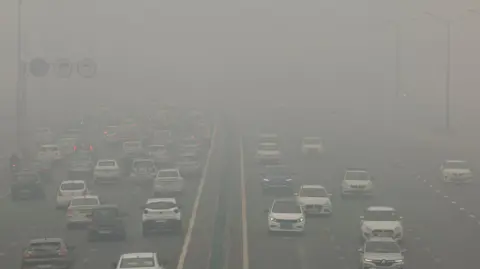 Reuters
Reuters
Emissions from vehicles contribute significantly to pollution in Delhi
Delhi itself produces a huge chunk of the pollution - emission from vehicles, construction and factories.
Every year, in the winter months, people get angry, journalists write and produce reports, politicians blame each other and courts fume - until we do it all over again the next year.
A public health emergency like this would spark mass protests in most democracies. But the anger in Delhi is mostly limited to social media.
Activists say the reason is that pollution doesn’t cause immediate problems for most people. Ingesting high levels of PM2.5 deteriorates health slowly. A Lancet study found that pollution led to more than 2.3 million premature deaths in India in 2019.
And then there is the class divide. People who can afford to temporarily leave the city do that, those who can buy air purifiers do that, and those who can vent on social media do that.
The rest, who don't have these options, just go about their lives.
The collective angst has so far not resulted in a massive protest and, as the Supreme Court once observed, politicians just “pass the buck” and wait for the season to get over.
Experts say governments at the federal level and in different states need to leave their party politics behind and work together to solve this problem. They need to focus on long-term solutions.
And citizens need to hold politicians accountable and courts have to pass decisive orders months before the pollution worsens.
This year, we are again in the thick of the season and temporary measures have been announced, like banning construction work.
But can these bring Delhi's elusive blue skies back? The evidence from the past few years doesn’t give much hope.
Follow BBC News India on Instagram, YouTube, Twitter and Facebook.

 1 month ago
9
1 month ago
9

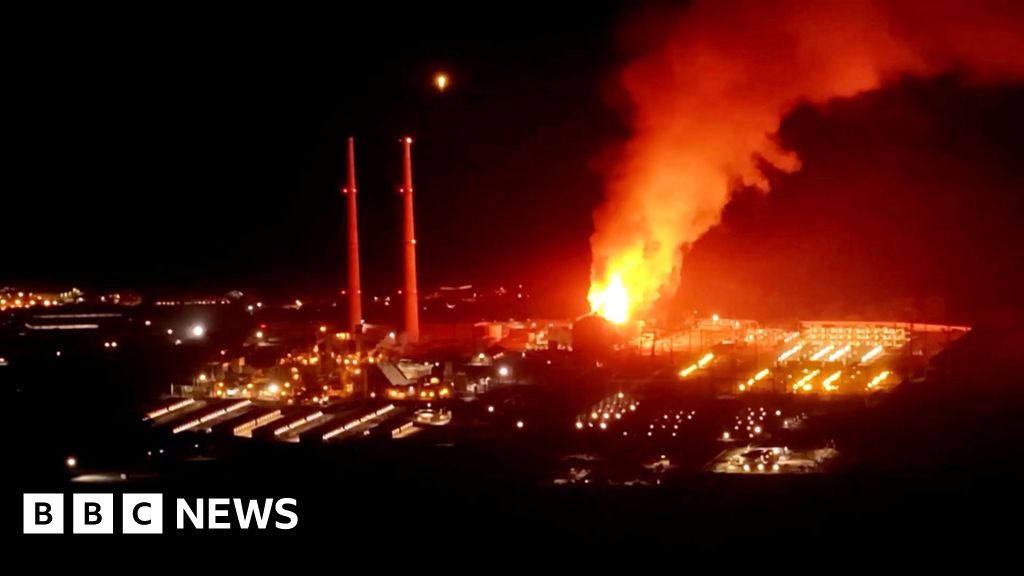
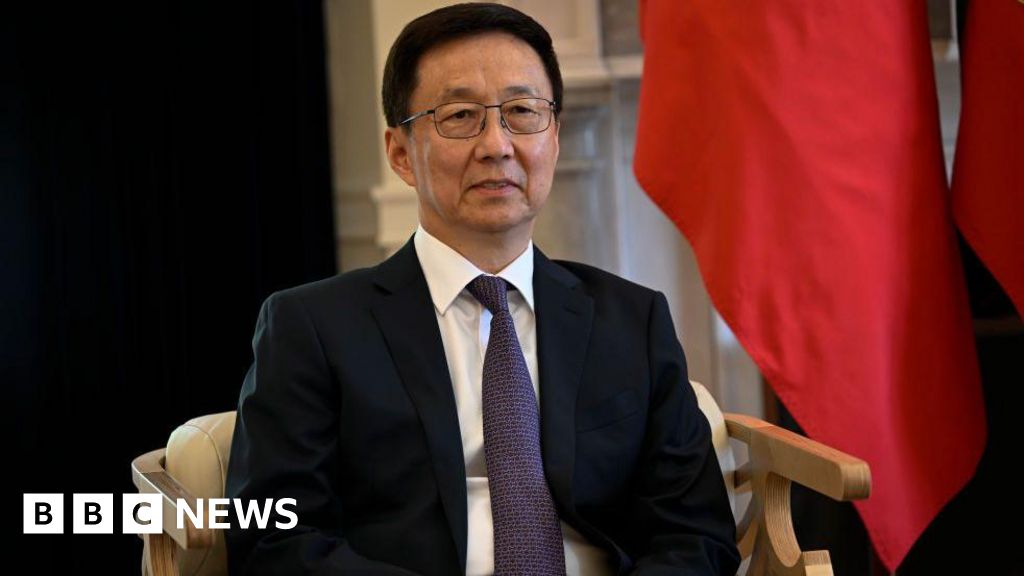





 English (US) ·
English (US) ·